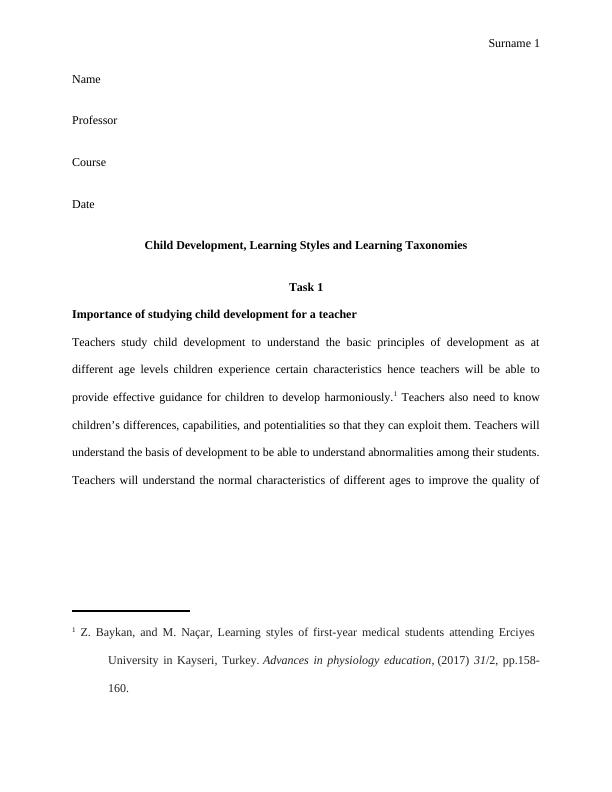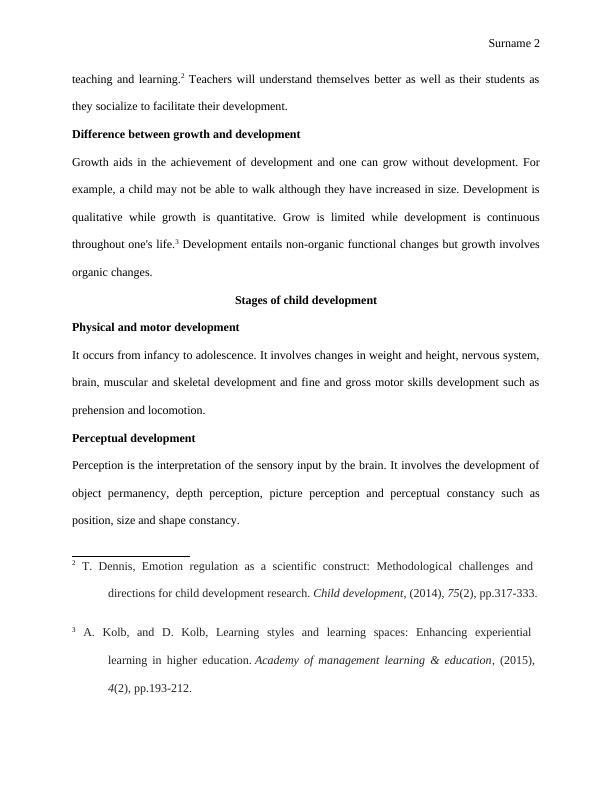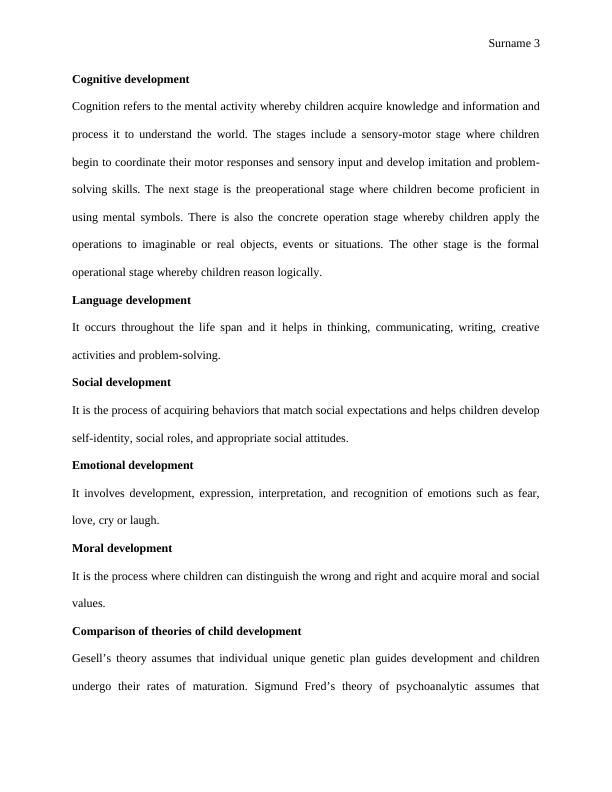Learning Styles and Learning Taxonomies
Prepare materials for a Teachers Handbook on the importance of studying child development, stages of child development, theories of child development, and the impact of children's development on their learning. Also, prepare materials for a discussion group on evaluating the concept of learning styles and analyzing different learning styles.
Added on 2022-08-12
Learning Styles and Learning Taxonomies
Prepare materials for a Teachers Handbook on the importance of studying child development, stages of child development, theories of child development, and the impact of children's development on their learning. Also, prepare materials for a discussion group on evaluating the concept of learning styles and analyzing different learning styles.
Added on 2022-08-12
End of preview
Want to access all the pages? Upload your documents or become a member.




